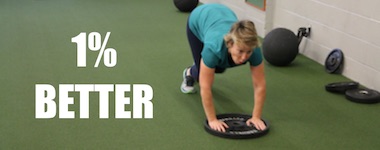
Think about change.
Do you get excited or do you cringe?
Let’s think about some changes: marriage, babies, new homes…all positive right?
What about stopping smoking, losing weight, placing your dirty clothes in the hamper after you wife has asked you repeatedly…still positive right?
So why is some change easy and other change hard?
We help clients everyday make changes to daily routines, choices, etc. and we have been on a search for why some people make the change easier than others?
I found a book called: Switch: How To Change Things When Change Is Hard by brothers Chip and Dan Heath. I highly recommend picking up this book.
In this book the Heath brothers discuss that successful changes share a common pattern. There are three things you must change.
1.) Direction. What looks like resistance is often a lack of clarity. So provide crystal-clear direction.
2.) Motivation. What looks like laziness is often exhaustion. It is critical that you engage people’s emotional side.
3.) Shaping the Path. What looks like a people problem is often a situation problem.
So I thought you might enjoy some research from two health researchers, Steve Booth-Butterfield and Bill Reger, professors at West Virginia University. They were studying ways to persuade people to eat healthier.
What looked like resistance is often a lack of clarity.
So they concluded from past research that people were more likely to change when the new behavior expected of them was crystal clear, but unfortunately, “eating a healthier diet” was anything but.
Where to begin? Which foods should people stop (or start) eating? Should they change their eating behavior at breakfast, lunch, or dinner? At home or in restaurants? The number of ways to “eat healthier” is limitless, especially given the starting place of the average American diet. This is exactly the kind of situation in which our rational side will spin his wheels, analyzing and agonizing and never moving forward.
As the two researchers brainstormed, their thoughts kept coming back to milk. Most Americans drink milk, and we all know that milk is a great source of calcium. But milk is also the single largest source of saturated fat in the typical American’s diet. In fact, calculations showed something remarkable: If Americans switched from whole milk to skim or 1 % milk, the average diet would immediately attain the USDA recommended levels of saturated fat.
How do you get Americans to start drinking low-fat milk? You make sure it shows up in their refrigerators. And that isn’t an entirely facetious answer. People will drink whatever is around the house-a family will plow through low-fat milk as fast as whole milk. So, in essence, the problem was even easier than anticipated: You don’t need to change drinking behavior. You need to change purchasing behavior.
Suddenly the intervention became razor-sharp. What behavior do we want to change? We want consumers to buy skim or 1 % milk. When? When they’re shopping for groceries. Where? Duh. What else needs to change? Nothing (for now).
Reger and Booth-Butterfield launched a campaign in two communities in West Virginia, running spots on the local media outlets (TV; newspaper, radio) for two weeks. In contrast to the bland messages of most public-health campaigns, the 1 % milk campaign was punchy and specific. One ad trumpeted the fact that one glass of whole milk has the same amount of saturated fat as five strips of bacon! At a press conference, the researchers showed local reporters a tube full of fat-the equivalent of the amount found in a half-gallon of whole milk. (Notice your emotional side appeals: They’re going for an “Oh, gross!” reaction.)
Reger and Booth-Butterfield monitored milk sales data at all eight stores in the intervention area. Before the campaign, the market share of low-fat milk was 18 percent. After the campaign, it was 41 percent. Six months later, it held at 35 percent.
This brings us to the final part of the pattern that characterizes successful changes: If you want people to change, you must provide crystal-clear direction.
By now, you can understand the reason this is so important: It’s so the Rational Side of Us doesn’t spin his wheels. If you tell people to “act healthier,” think of how many ways they can interpret. (Do I eat more grains and less meat? Or vice versa? Do I start taking vitamins? Would it be a good trade-off if! Exercise more and bribe myself with ice cream? Should I switch to Diet Coke, or is the artificial sweetener worse than the calories?)
What looks like resistance is often a lack of clarity. Before this study, we might have looked at these West Virginians and concluded they were the kind of people who don’t care about their health. But if they were indeed “that kind” of people, why was it so easy to shift their behavior?
If you want people to change, you don’t ask them to “act healthier.” You say, “Next time you’re in the dairy aisle of the grocery store, reach for a jug of 1 % milk instead of whole milk.”
Whether the switch/change you seek is in your family, in your charity, in your organization, or in society at large, you’ll get there by making three things happen. Direct, Motivate, and shape the Path.
I highly recommend Switch, by Chip Heath and Dan Heath!
If you are needing help with direction, motivation or not quite sure what avenue is best for your health and wellness goals, let our team of Professionals help. Request your Free Consultation today!


